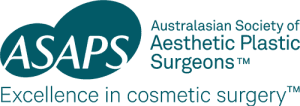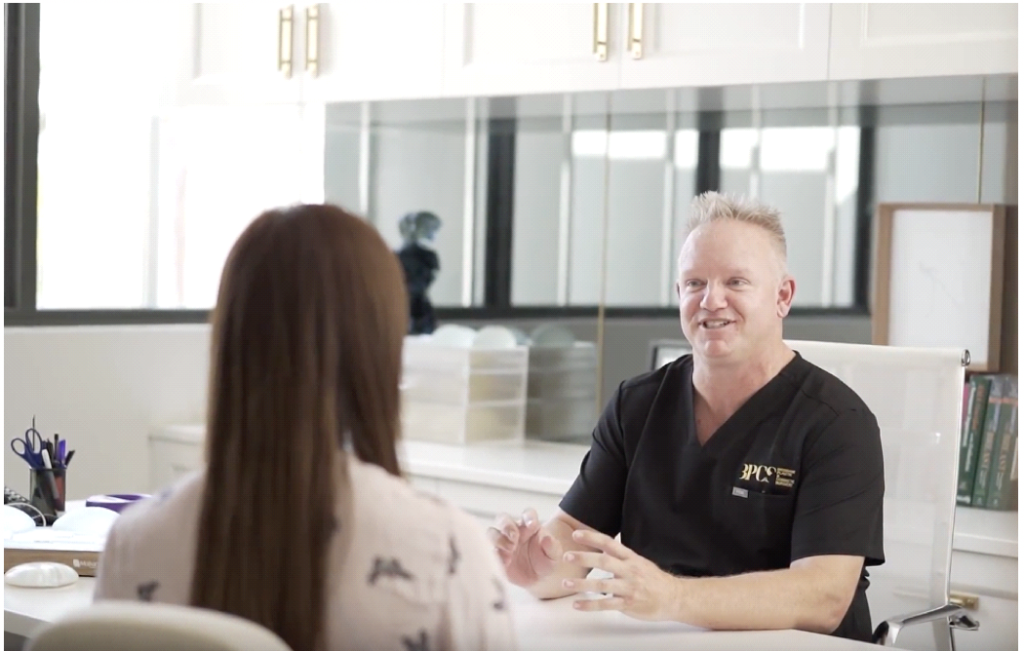By Dr Philip Richardson, Specialist Plastic Surgeon, Brisbane
If you ask any plastic surgeon what the hardest part of their job is, you might expect the answer to be related to surgical skill, choosing the right prosthetics, or dealing with complex cases. While these are all certainly difficult tasks, any plastic surgeon would agree that one of the hardest tasks they face is managing patient expectations.
Whether consulting with breast augmentation, breast reduction, breast lift, or breast implant revisionpatients, it is important to address each patient’s limitations when it comes to surgery and ensure expectations are properly managed. It is prudent to be wary of any surgeon who tells you they can get a perfect result or is not specific about what they can achieve.
While your surgeon will play a pivotal role in communicating the results you can achieve, it’s equally important to go into your consultation equipped with the knowledge you need to properly adjust your expectations. This blog post aims to provide three key recommendations to help you develop realistic expectations of your surgery and to assist you in making the most informed decisions when it comes to your journey. While this blog considers the specific context of breast augmentation, many of the points can easily extend to any and all breast and face procedures.
Understand the role of breast implants
The first step to ensuring your expectations of breast augmentation surgery are realistic is to properly understand the role of breast implants and their limitations. While breast augmentation is certainly a transformative surgery, there is a common misconception that it holds superpower abilities to reshape, restore, lift, and transform your entire breast aesthetics. The truth is, in some cases breast implants are limited to simply producing a larger version of the breasts you already have. Yes, implants can help to address asymmetry, they can manufacture upper-pole fullness, create side-boob, and they can enhance cleavage – but none of these things are guaranteed. Every patient has a unique anatomy, with unique limitations.
Let’s say a patient, let’s call her Jenny, comes to the clinic with a goal to achieve close cleavage without a bra, and she is a perfect candidate. Jenny has a small chest width, naturally close-set cleavage, and little-to-no existing breast tissue. Jenny has surgery, and a few months later sends in her amazing bikini photos to the clinic co-ordinator, who posts the images on the clinic’s social media. Amazed by the results, another lovely lady, let’s call her Laura, decides to make a consultation. Laura is a mum of two with some breast droop after breast-feeding, and naturally wide-set cleavage. What Laura doesn’t understand is that due to her anatomy, she cannot achieve the same result. She might need a breast lift to get her breasts to sit as high as Jenny’s but she may not come close to achieving the same upper-pole fullness due to her breast measurements. She might require a much larger implant to achieve the close cleavage she wants, but even then, her chest wall anatomy may prevent her from achieving the same look as Jenny. While her surgeon can get her a great result and improve her breasts incredibly, women like Laura can fall into the trap of comparisons and feel dissatisfied with their results due to their unrealistic expectations.
Think of your natural anatomy as a canvas, and the surgeon as the artist. If you have a blank canvas (little to no existing breast-tissue) it is easy for the surgeon to paint the picture you desire. If you come in with a canvas that has its own unique and complex painting (chest wall asymmetry, breast droop), the surgeon is limited. They cannot erase what is already there, but they can help to improve the painting by adding to it. This is where surgical skill plays a huge factor in achieving the best possible result for you. At the end of the day, you will have a beautiful painting, but there will still be aspects of the original canvas that cannot be erased, and you must be willing to accept this.
Some of the most common examples where patients are coming to a consultation with a “complex canvas” include the following:
- Breast Droop: patients with drooping breasts should understand that an implant cannot lift the breasts, it can only fill out loose skin. In fact, patients may find that an implant actually worsens breast droop due to the strain on the lower-pole.
- Wide-set Cleavage: many patients are chasing close cleavage, however chest wall anatomy will determine the potential of a patient to achieve this. If you have naturally wide-set cleavage, you may only see a slight improvement in this area.
- Asymmetry: Nearly all women have some degree of asymmetry, and standard protocol for these cases is to use two different sized implants. If the issue however is that your nipples are asymmetrical, or your breast folds sit at different heights, an implant may not be able to fix this.The key takeaway from understanding the role of breast implants is there is no magical device that can transform your natural anatomy and get you the breasts of your dreams, but there are skilled surgeons with techniques that can help to improve and enhance. That’s why it’s so important to engage in meaningful discussion with your plastic surgeon.
Ask your surgeon what to expect
At your initial consultation with a plastic surgeon, it can be easy to feel overloaded with information. There are so many areas to cover, from the procedure, to risks, to pre and post-op care. It’s not uncommon for patients to become lost in the conversation and forget about half the questions they had prepared. Our advice to you is to take the reins with the consultation. Once your surgeon has done their due diligence and explained the ins and outs of the procedure, it’s your time to take control of the consult and make the most of your time with them. Remember that any information regarding risks, how the surgery works, and pre-and post-op care will be provided to you in writing and can be discussed with a clinic nurse at any time. The consult is your chance to discuss your specific anatomy and ask the hard-hitting questions about what your surgeon can do for you.
Here are our three top tips for making the most of your consult:
Be Specific
One of the huge pitfalls of patients is that they are too vague with their goals. If you come in telling your surgeon that your aesthetic goal is to be a C-cup, you won’t be communicating your expectations clearly. All this tells your surgeon is that you want to increase size. Cup sizes are extremely variable, and everyone’s perception of a C-cup is vastly different. You should be specific about what aspects of your breasts you are unsatisfied with, specific about why you want surgery, and specific about what breast features are important to you, whether it be close cleavage, side-boob, or a “natural” aesthetic.
Bring Photos
The best way to be specific about your goals is to bring visual examples of them! Bring in some photos of your ideal results from social media or the internet. Look at each photo and make physical or mental notes of what aspects of the breast appeal to you. Is it the cleavage? Upper-pole fullness? Size? Figure out why you like the results so much and discuss them at your consultation. This way you can be sure that your surgeon fully understands the look you’re going for and can tell you whether it’s realistic or not.
Reflect
After your consultation, you should take time to reflect. If your surgeon has told you that they may not be able to achieve close cleavage because of your anatomy, take a moment to think if you will be happy if you don’t achieve close cleavage. If they have told you that you would benefit from a breast lift if you want the best long-term results, think over your options carefully. Utilise the resources your surgeon has provided to you including the nurse care, patient support groups, and whatever you need to properly weigh up your options. A huge part of having realistic expectations is fully accepting the limitations of surgery, and making an informed decision with this knowledge, so don’t rush it.
Realistic expectations extend well beyond your consultation, and still need to be managed even after your surgery.
After breast surgery, the recovery period can be daunting as your breasts go through a number of weird and wonderful stages of change. It’s incredibly important that patients avoid judging their results until at leastthe six-week mark. Even then, six weeks is still very early on, and your breasts will continue to change for many months to come. Judging the aesthetic aspects of your breasts too early on can send you into a spiral of unnecessary worry, as not only breast shape, but size, cleavage, everything will settle and transform over time. Many of my patients reflect on their journey a year or more down the track and talk about how dramatically their breasts changed, and how everyone’s journey is so unique. You should never compare your progress to another patient, as while one patient’s breasts may settle in three weeks and look soft and sloping, another patient may still have the boxy, swollen, misshapen breasts that are the hallmark of breast augmentation recovery. There is no way to determine how quickly or slowly your breasts will settle, so focus on your own progress and trust the process.
The Verdict
When it comes to managing your expectations of breast surgery, there are a number of steps you can take to make sure you’re being realistic. This involves understanding the limitations of the surgery itself, engaging in meaningful discussion with your plastic surgeon that is specific and considered, as well as being patient throughout your recovery and avoiding premature judgements. There is no silver bullet to satisfaction after breast surgery, and each patient embarks on their own unique journey. If you have any questions surrounding breast surgery, you can get in contact with Brisbane Plastic Surgeon, Dr Philip Richardson and his team.

